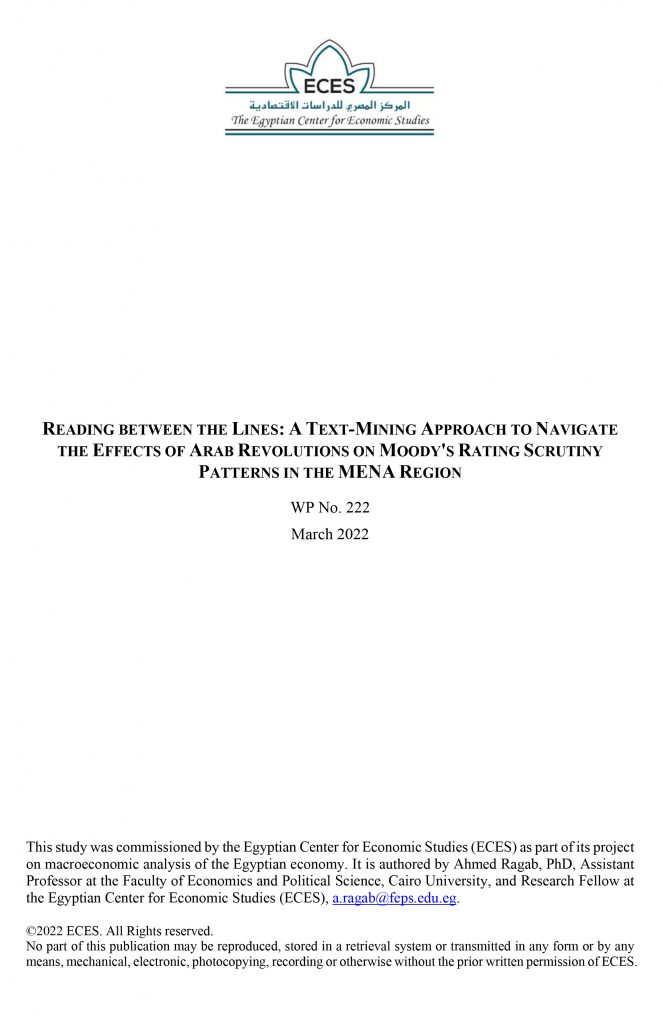Credit rating agencies play a decisive role in determining the borrowing costs in global financial markets through the standardized ratings they produce. These agencies, despite their announced methodologies, prefer to keep their empirical evaluation receipt stealthy so that they are not obliged to justify their discretionary conduct of sovereign ratings. Using a novel text-mining approach, this paper evaluates the empirical scrutiny policy of Moody’s in the MENA region, by investigating the information content of 648 rating reports between 1999 and 2021. Our empirical findings reveal that fiscal scrutiny has always been a standard component of Moody’s rating strategy in the MENA region across all country groups and time periods, including distressed lower middle-income countries in the aftermath of the Arab upheavals. In contrast, high-income countries were less scrutinized in terms of economic and social developments relative to lower middle-income ones before the revolutions. With the onset of the revolutions, not only did cross-country scrutiny differences vanish, but also commentary patterns dramatically shifted, with political commentary reviving at the expense of economic and social themes. A decade after the upheavals, Moody’s still has a strong appetite for political scrutiny, but this time for all country groups in the MENA region. These findings offer insights on how rating agencies reward or penalize countries for their policy decisions, which shall help governments in enumerating the effects of their rating-related measures and, as a result, better formulating their future policy actions.

Reading between the Lines: A Text-Mining Approach to Navigate the Effects of Arab Revolutions on Moody’s Rating Scrutiny Patterns in the MENA Region
29-03-2022
Author(s): Ahmed Ragab, PhD, Assistant Professor at the Faculty of Economics and Political Science, Cairo University, and Research Fellow at the Egyptian Center for Economic Studies (ECES)
Publication Number: ECES-WP222-E
